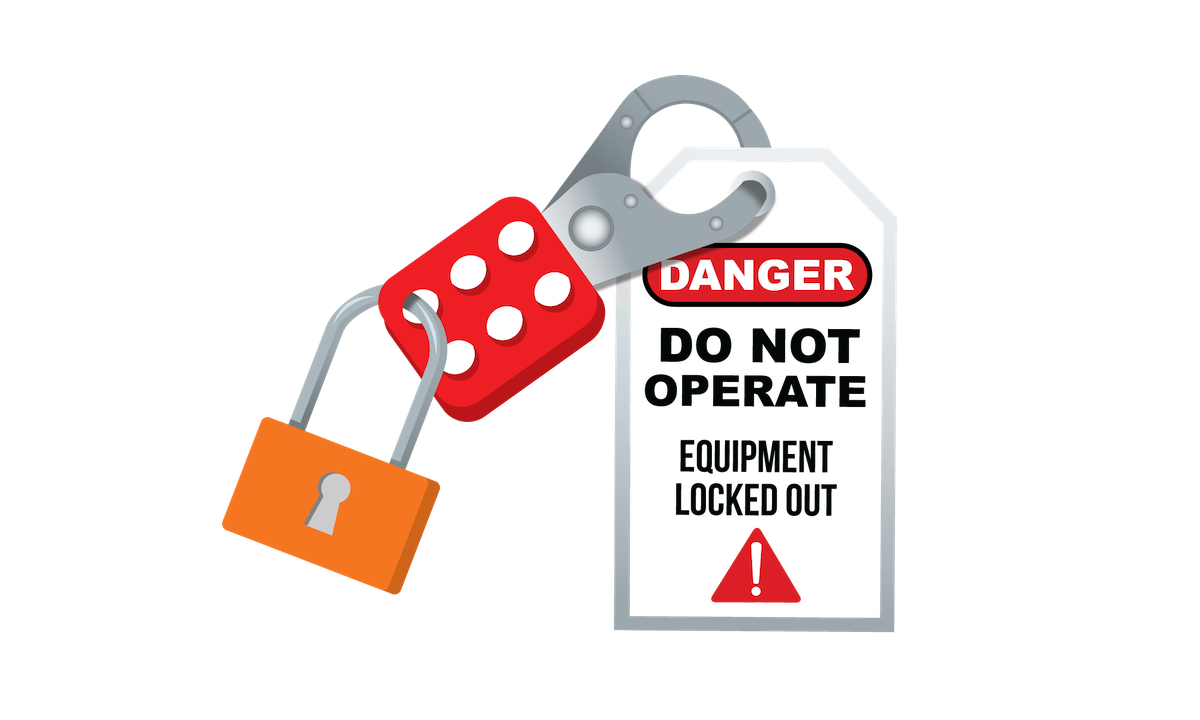Lockout/Tagout
Languages: English
Media Editing: The video module(s) in this subject are editable under our Content Studio offering unless otherwise indicated. For more information about Content Studio, contact your CSM.
Description: Being able to confidently and thoroughly perform a proper lockout-tagout procedure is imperative to workplace safety. Being able to recognize when a lockout-tagout is happening in your area and the implications of the process is also vitally important to your safety. This subject not only teaches you how to properly perform a thorough lockout-tagout procedure, it also explains some of the rules and best practices to help make sure your workplace is as safe as possible. Content is intended to complement your company's written Energy Control (LOTO) program and written procedures (when required) and supplement or refresh OSHA training requirements.
Languages: English
Media Editing: The video module(s) in this subject are editable under our Content Studio offering unless otherwise indicated. For more information about Content Studio, contact your CSM.
Description: Being able to confidently and thoroughly perform a proper lockout-tagout procedure is imperative to workplace safety. Being able to recognize when a lockout-tagout is happening in your area and the implications of the process is also vitally important to your safety. This subject not only teaches you how to properly perform a thorough lockout-tagout procedure, it also explains some of the rules and best practices to help make sure your workplace is as safe as possible. Content is intended to complement your company's written Energy Control (LOTO) program and written procedures (when required) and supplement or refresh OSHA training requirements.
Languages: English
Media Editing: The video module(s) in this subject are editable under our Content Studio offering unless otherwise indicated. For more information about Content Studio, contact your CSM.
Description: Being able to confidently and thoroughly perform a proper lockout-tagout procedure is imperative to workplace safety. Being able to recognize when a lockout-tagout is happening in your area and the implications of the process is also vitally important to your safety. This subject not only teaches you how to properly perform a thorough lockout-tagout procedure, it also explains some of the rules and best practices to help make sure your workplace is as safe as possible. Content is intended to complement your company's written Energy Control (LOTO) program and written procedures (when required) and supplement or refresh OSHA training requirements.
Topics
Essential Information About Lockout/Tagout Procedures
-
This is an introduction topic to the main concepts and terminology regarding lockout-tagout procedures. Learners are taught the definition of lockout-tagout, why and when they are required, who is authorized to perform them, what their individual responsibilities are, and more.
-
Questions (level 1, 2, 3)
Video module
-
This topic is currently available in English.
-
Federal regulations mandate that proper lockout/tagout procedures are completed in order to keep employees and the public safe from injuries or death.
Lockout/tagout is required whenever a person (worker or technician) needs to service a machine or put themselves in contact with the hazardous areas of a machine. (ex: removing safety guards for servicing.)
Only trained and authorized employees can perform the lockout/tagout procedure. They have the appropriate training to identify and disconnect the energy sources and to properly shut down the machine.
To prevent confusion about the purpose of the lock, and to help ensure that the lock isn’t compromised or weakened by being over-used, only authorized locks, tags, and devices can be used in logout/tagout operations.
Federal regulations say that the locks and tags used for lockout/tagout procedures must be standardized, so everyone knows that they’re specifically for the safety procedure, and so they’re not mistakenly used for other purposes, like locking lockers, etc.
How to Perform A Proper Lockout/Tagout Procedure
-
In this topic, learners are taught the steps involved in performing a proper lockout-tagout procedure. A series of questions and scenarios will help teach the pertinent information, from understanding what a lockout-tagout is, to isolating energy sources, to the final step of testing to make sure the lockout was successful.
-
Questions (level 1, 2, 3)
-
This topic is currently available in English.
-
Lockout/tagout is a set of specific practices and procedures to disconnect all energy sources from a machine, which renders the machine inoperable, so service people can safely interact with the machine.
The tags used for lockout/tagout should include: the name of the authorized person attaching (and removing) the lock and tag, the reason for the lockout/tagout, the date and time the lock and tag were attached. This lets others know that the equipment is inoperable and why, and who is authorized to remove the lock.
Always read the written lockout documentation for each machine before starting the lockout/tagout procedure. Each machine has a specific lockout and start up procedure that must be followed.
Before beginning the lockout/tagout procedure, make sure all affected employees are notified about the lockout/tagout and why it’s happening. This is to make sure no one tries to power the machines while they’re being serviced.
Once the affected employees are notified about the lockout/tagout, turn off the machine using the regular ON/OFF controls.
After turning off the machine with the ON/OFF controls, disconnect all of the energy sources that provide power to the machine, and secure the energy isolating device to stop anyone from attempting to repower the machine.
In the lockout/tagout procedure, energy-isolating devices are mechanical devices that physically prevent the release or transmission of energy, so that the equipment/machine cannot be started while it’s being serviced. Control circuit devices, like push buttons, are not energy-isolating devices, and should not be used to manage energy during lock operations.
Once the energy source has been disconnected, use your company’s designated lock and tag to lock the energy-isolation device.
Disconnect ALL energy types, including: electrical, mechanical, hydraulic, pneumatic, chemical, thermal, and the force of gravity.
Always test the lockout before beginning work on a machine to confirm that all energy sources have been disconnected, and the machine cannot be powered. Try to turn on or use the machine; make sure the machine will NOT start.
Preview of topic image for “How to Perform A Proper Lockout/Tagout Procedure” as this topic is questions only.
How to Release The Lockout/Tagout Procedure
-
Learners are taught the procedure to release a machine from a lockout-tagout. This topic includes information about who is authorized to remove the lockout-tagout, who is allowed to touch or remove the locks and tags, and the steps to take to re-power the machines.
-
Questions (level 1, 2, 3)
-
This topic is currently available in English.
-
Before removing the lock and tags from a machine, always read the lockout/tagout document for the machine, and follow the specific reversal procedure.
When reversing the lockout/tagout on a machine, make sure all the tools, people, etc., are cleared from the machine’s operational areas and from the immediate area.
Replace all of the machine’s safety guards, interlocks, and other safety devices before removing the energy-isolating device.
Notify any affected employees, and any other employees in the area, that the machine is about to be re-powered before removing the lock and tags and re-powering the machine.
Before removing the lock and tags, make sure the regular on/off controls are in the OFF position. This will help make sure the machine doesn’t suddenly start.
When it’s time to remove the lock and tags from the machine, remove ONLY YOUR lock and tag, so others know that your portion of the servicing is complete, and that you are safe and clear of the service area.
When reversing a lockout/tagout, NEVER remove another worker’s lock or tags, as this could result in injury or worse.
After removing YOUR lock and tag, return the energy-isolating device to the ON position.
After removing the energy-isolating device from the machine, turn the machine to the ON position.
When reversing the lockout/tagout on a machine, test that the machine is completely functional and that the servicing was successful before letting employees back into the area.
Preview of topic image for “How to Release The Lockout/Tagout Procedure” as this topic is questions only.








